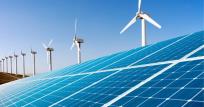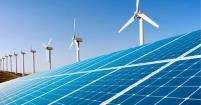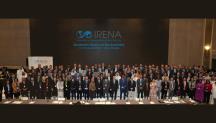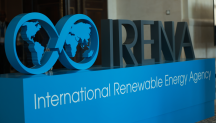

Energy Efficiency Vital to Doubling Global Share of Renewables
Newsletter
It may sound obvious that efforts to scale-up renewable energy and efforts to improve energy efficiency are interlinked. We consume less energy overall when we implement energy efficiency measures like installing building insulation or efficient lighting. In parallel, as we add more renewable energy to the world’s energy mix, the share of renewable vs. non-renewable energy sources increases. One simple way to look at it is, the less energy we consume thanks to energy efficiency measures, the higher the share of renewable energy in the global energy mix. But explaining the synergies and trade-offs between renewable energy and energy efficiency objectives gets a bit more complex.
Thanks to a first-of-its kind collaboration between IRENA and the Copenhagen Centre on Energy Efficiency (C2E2), and a joint working paper published today, we now have a better understanding of the interplay between renewable energy technology deployment and energy efficiency improvements. The paper finds that when energy efficiency and renewable energy potentials are combined, total global energy demand can be reduced by up to 25% by 2030.
Many people assume that only energy efficiency results in decreased energy use, but the use of renewable energy also contributes to reducing energy demand. The paper shows that energy efficiency measures would account for 50 to 75% of the total energy savings, with renewable energy delivering the rest. This is caused by the use of modern renewable energy technologies, such as: the adoption of efficient cook stoves which increase conversion efficiency 2-3 times, therefore requiring less fuel; the use of electrification technologies like geothermal or air heat pumps which consume small amounts of renewable power but deliver 3-4 times their consumption of power in the form of heating or cooling; and the switch to power technologies like solar and wind power, which require no thermal conversion and therefore no wasted fuel.
The working paper, Synergies Between Renewable Energy and Energy Efficiency, is the first outcome of a collaboration between C2E2 and IRENA. The partnership is based on the United Nations’ Sustainable Energy for All (SE4All) initiative, which aims to achieve three interlinked global objectives:
- Ensuring universal access to modern energy services.
- Doubling the global rate of improvement in energy efficiency.
- Doubling the share of renewables in the global energy mix.
To ensure each objective is met, global agencies were identified to act as “hubs” for the objectives with C2E2 as the energy efficiency hub (objective 2) and IRENA is the renewable energy hub (objective 3). C2E2 and IRENA have partnered to fill knowledge gaps, share new ideas and technologies from countries leading in renewable energy and energy efficiency deployment, and explore the interaction between the two objectives.
The recent working paper finds that achieving the renewable objective is dependent on achieving the efficiency objective. Put simply, it is not possible to achieve a doubling of the renewable energy share through renewable energy deployment alone. The quantitative assessments are analysed using data for eight countries (China, Denmark, France, Germany, India, Italy, the United Kingdom and the United States), which covers half of global energy use. It also shows that increasing the share of renewables results in a higher energy efficiency improvement rate.
The guiding document for IRENA’s role as renewable energy hub of the SE4All initiative is REmap 2030 – a global roadmap outlining a plan to double renewable energy in the world’s energy mix by 2030. REmap is the first global study of renewable energy potential built from the bottom-up, analysing 40 countries representing over 80% of global energy use. In addition to the power sector, the report looks at the three end-use sectors of buildings, industry and transport. The roadmap shows that doubling the renewable energy share in the global energy mix from 18% in 2010 to 36% by 2030 is not only technically feasible, but more affordable than the alternative. Doing so will also create jobs, reduce pollution and provide half of the emission cuts needed to avoid the worst effects of climate change.




